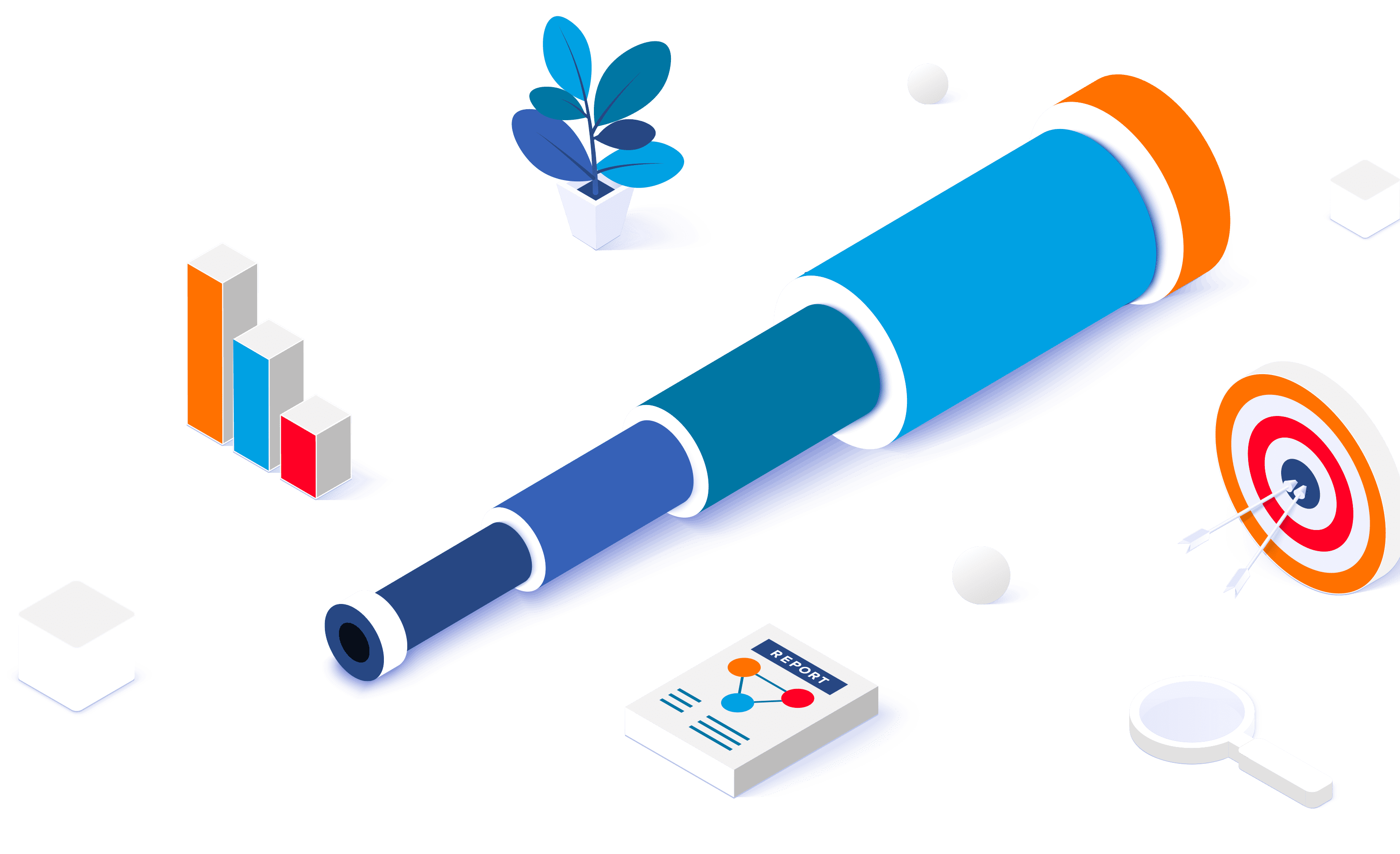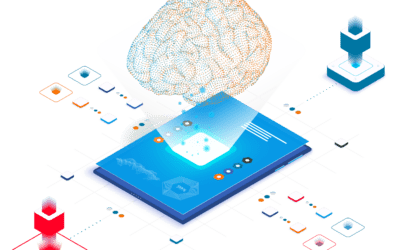Cognitive search uses artificial intelligence technologies to improve search queries and extract information from diverse data sources. It goes beyond traditional search engine functionality by collating many data sources while enabling automated tagging and personalization. It elevates how an organization’s employees discover and access greater amounts of relevant information in the context of their work.
Data access, quality, cultural maturity, and activation challenges
Companies have a growing complexity of systems.
Many companies have specific software for each function from Payroll, Accounting, HR, ERP, Billing, CRM, analytics, and industry-unique systems. Data and technology stacks house growing amounts of fast-changing data, scattered across the organization, often with no standard structure and external sources of great value, not considered or captured at all.
Up to 95% of all data is unstructured (social media content, call transcripts, video, audio, and much more. Unstructured data is often where the most insight is mined, but it’s also largely not used. As a result, most organizations use a mere 1% of available data to help improve decisions. Companies attempt to empower their workforce, make them citizen data scientists, only to fail partly because the approach has been technology-focused and the skillsets necessary to manage a data product lifecycle are broad and uncommon –Source: Hopkins et al. Forrester.
A DSaaS platform empowers companies to overcome the broad challenges that can hold them back.
What is cognitive search?
Cognitive search combines indexing technology with powerful artificial intelligence technologies like natural language processing (NLP) and machine learning algorithms that draw from multiple data sources and structures. Cognitive search empowers employees to discover knowledge by improving the relevance and context of extracted information. This search capability increases the efficiency of query responses, enabling greater productivity and better service quality. Embedded artificial intelligence learns from employee searches to produce increasingly relevant results.
Companies without cognitive search endure many challenges
Impact
- Cumbersome access consumes lots of time.
- Up to 30% of an employee’s workday can be spent searching and gathering data – 2 ½ hours per day
- Missing information stymies business application
- Opportunity loss due to inability to find relevant data
- Productivity loss
- error-prone
- data duplication
- shifts concern from missing data to bad data.
Companies with cognitive search elevate performance
Cognitive search elevates organizational productivity. The search eliminates time wasted on collating information from multiple systems. Gathering and unifying data for a consolidated view with advanced relevant search results. Cognitive search means a company can consistently extract meaning from growing amounts of data across the entire organization. Benefits include; time-saving, cost reduction, increased productivity, engaging, empowering, and motivating the workforce to drive higher levels of service quality and volume.
How does cognitive search work?
Cognitive search is underpinned by a digital ecosystem with transparent data hosting a digitized company-wide data version with an embedded advanced artificial intelligence search capability setting the foundation for intelligent contextual search.
What is artificial intelligence?
Hows does artificial intelligence relate to cognitive search?
Artificial intelligence is a broad branch of computer science.
The goal of artificial intelligence is to create systems that function intelligently and independently. The easiest way to think about artificial intelligence is in the context of a human.
Natural Language Processing NLP
Humans can write and read the text in a language. This is the field of Natural Language Processing NLP.
In cognitive search, natural language processing is applied to transform unstructured data, gathered from internal and external sources along with structure data into a usable schema.
Pattern Recognition, Machine Learning
Humans have the ability to see patterns, such as the grouping of like objects. This is the field of Pattern Recognition. Machines are even better at pattern recognition because they can use more data and dimensions of data. This is the field of Machine Learning.
In Cognitive search machine learning algorithms continuously improve the relevancy of results.
Neural Networks
The human brain is a network of neurons, used to learn things. If we can replicate the structure and function of the human brain we might be able to attain cognitive abilities in machines. This is the field of Neural Networks.
Deeper Learning
If these networks are more complex and deeper and we use those to learn complex things, that is the field of Deep Learning.
Convolution Neural Network (CNN)
There are different types of deep learning in machines, which are essentially different techniques to replicate what the human brain does. If we get the network to scan images from left to right, top to bottom it’s a Convolution Neural Network (CNN). A CNN is used to recognize objects in a scene. This is how computer vision fits in, and Object Recognition is accomplished through AI.
Recurrent Neural Network (RNN)
Humans can remember the past-like what you had for breakfast yesterday. We can get a neural network to remember a limited past. This is a Recurrent Neural Network (RNN)
Classification, or Prediction
We can use machine learning techniques to do 1 of 2 things; Classification, or Prediction
When using information about customers, and assigning new customers to a group like young adults you are classifying that customer. If using data to predict if a customer is likely to defect to a competitor you are obviously making a prediction, which is likely to be derived from a learning algorithm.
Supervised Learning
If you train an algorithm with data that also contains the answer it’s called Supervised Learning. e.g. If you trained a machine to recognize classmates by name you would need to identify them for the computer.
In cognitive search, a supervised model predicts labels for new data using a training set comprising pre-labeled data.
Unsupervised Learning
If you train an algorithm with data where you want the computer to figure out the patterns then it’s Unsupervised Learning. e.g. You might want to feed the computer information about urban traffic and expect the machine to derive patterns in the data by itself.
In cognitive search clustering, an unsupervised learning algorithm is applied that groups subsets of data based on similarities enabling a search to be limited to specific groups of data, in each cluster and not an entire index.
Reinforcement learning
If you give an algorithm a goal and expect the machine, through trial and error to achieve that goal it’s called Reinforcement learning. e.g. A robots’ attempt to crawl over a wall until it succeeds.
In cognitive search, a recommendation is often the result of multiple machine learning algorithms that combine to provide contextual helpful content.
Cognitive search leverages a single source of truth enabling instantaneous access to multiple applications and data source content simultaneously.
Deeper Learning
At the peak of deeper learning algorithms undergo intense computing processing to develop a matrix that synthesizes the operations between data samples and models for advanced deeper learning. They enable new knowledge from existing facts about data to create knowledge from knowledge.
Alephnet operates at the leading edge in this space, advancing the possibilities of cognitive networks to solve complex challenges. These reasoning approaches add to the knowledge that organizations have for their particular domain issues, accelerating their ability to analyze, learn about, and overcome them through a cycle of discovery. Valuable to all industries with applications across all business activities, departments, and locations companies solve complex challenges with augmented intelligence enabling a workforce to do more.

